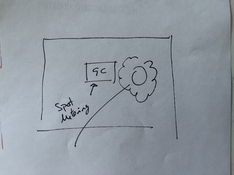Using a grey card with a matrix or evaluative, multi-pattern meter is not really sensible. These meters have their own reference points – in fact for a person unsure of how to use a grey card, the chances are the on-board meter will have a very good idea of the exposure! Would I use a grey card with my vintage EOS 1N evaluative meter? No. Absolutely not at all.
But with hand-held incident or spot meters, it is very useful as a set reference point around which other values are balanced.
I lock-in a grey car value before 'sweeping' a tonally varied scene with a multispot meter, then balance all values to the grey card, shifting values up or down if necessary. This is but just one of many ways to employ a grey card.
I would be careful using just any old card, including low quality Chinese knock-offs. Calibrite, Kodak, Ilford and Hama, among others, make hue-correct grey cards. Kodak has A4 cards easily cut down to multiple card-sized pieces that fit to ID tag holders.
When not in use they should be stored away from moisture, heat and sun. My own cards are credit card-sized that are well suited to the similarly sized viewfinder shapenof a Sekonic L758DR multispot meter.






